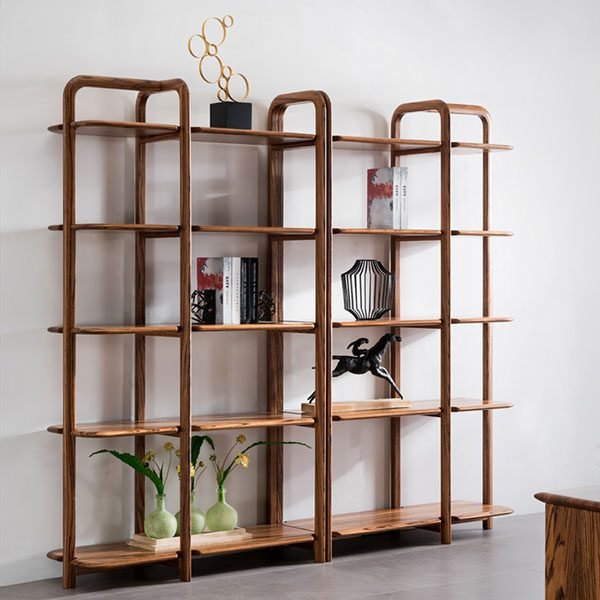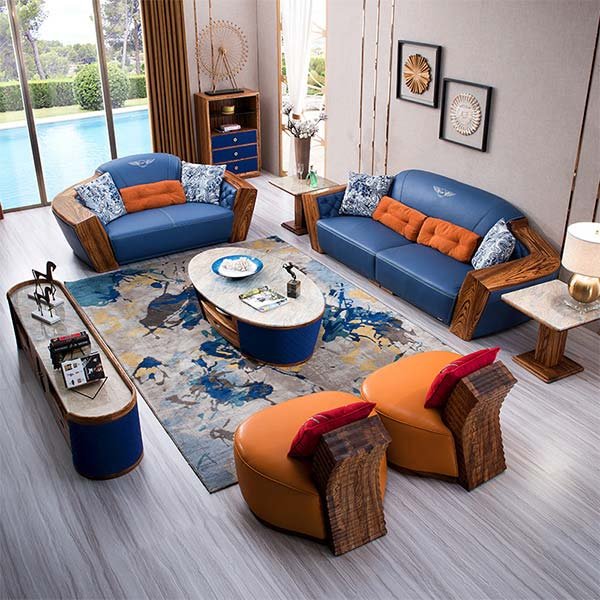“Maximize space, minimize clutter – create a cozy living room that feels bigger than it is!”
Utilize multi-functional furniture
Arranging furniture in a small living room can be a challenging task. Limited space requires careful planning to ensure that the room remains functional and visually appealing. One effective strategy for maximizing space in a small living room is to utilize multi-functional furniture.
Multi-functional furniture serves a dual purpose, providing both storage and seating options. For example, a storage ottoman can be used as a coffee table while also offering a place to store blankets, magazines, or other items. Similarly, a sofa bed can serve as a comfortable seating option during the day and transform into a bed for overnight guests.
Another way to make the most of limited space is to choose furniture that is appropriately scaled for the room. Oversized furniture can overwhelm a small space and make it feel cramped. Opt for smaller pieces that fit the scale of the room while still providing ample seating and storage options.
In addition to choosing the right furniture, consider the layout of the room. Experiment with different arrangements to find the most efficient use of space. One popular layout for small living rooms is to place the furniture against the walls, leaving the center of the room open for traffic flow. This arrangement creates a cozy and inviting atmosphere while maximizing space.
When arranging furniture in a small living room, it’s important to consider the flow of the room. Avoid blocking doorways or windows, as this can make the room feel closed off and claustrophobic. Instead, create pathways that allow for easy movement throughout the space.
To create a sense of balance in a small living room, consider the placement of furniture in relation to each other. Arrange seating options in a way that encourages conversation and interaction. Avoid placing all the furniture on one side of the room, as this can create an unbalanced and awkward layout.
Incorporating storage solutions into your furniture can also help maximize space in a small living room. Look for pieces that offer built-in storage, such as bookshelves, cabinets, or drawers. This will help keep clutter at bay and make the room feel more organized and spacious.
When arranging furniture in a small living room, it’s important to think creatively and make the most of every inch of space. By utilizing multi-functional furniture, choosing appropriately scaled pieces, and carefully considering the layout and flow of the room, you can create a functional and stylish living space that feels larger than it actually is. With some careful planning and attention to detail, you can make the most of your small living room and create a space that is both practical and beautiful.
Create a focal point
Arranging furniture in a small living room can be a challenging task, but with the right strategies, you can make the most of the space you have. One key aspect to consider when arranging furniture in a small living room is creating a focal point.
A focal point is a central element in the room that draws the eye and anchors the space. This could be a fireplace, a piece of artwork, or a large window with a view. By creating a focal point, you can help to organize the layout of the room and make it feel more cohesive.
When choosing a focal point for your small living room, consider the size and scale of the room. If you have a small space, you may want to choose a smaller focal point that won’t overwhelm the room. A piece of artwork or a mirror can be a great option for a small living room, as they can add visual interest without taking up too much space.
Once you have chosen a focal point for your small living room, you can start arranging your furniture around it. Place the largest piece of furniture, such as a sofa or a sectional, facing the focal point. This will help to create a sense of balance in the room and make the focal point the center of attention.
Next, arrange the rest of the furniture in the room around the focal point. Consider the flow of traffic in the room and make sure there is enough space for people to move around comfortably. You may need to experiment with different furniture arrangements to find the one that works best for your space.
In addition to arranging furniture around the focal point, consider using furniture that can serve multiple purposes. For example, a coffee table with storage can help to keep clutter at bay, while a sofa bed can provide extra seating and sleeping space for guests. By choosing furniture that is both functional and stylish, you can make the most of your small living room.
Another tip for arranging furniture in a small living room is to use light colors and reflective surfaces to make the space feel larger and more open. Light-colored walls, furniture, and accessories can help to reflect light and create a sense of airiness in the room. Mirrors can also be a great way to make a small living room feel more spacious, as they can reflect light and create the illusion of depth.
In conclusion, creating a focal point and arranging furniture around it is key to making the most of a small living room. By choosing a focal point, arranging furniture strategically, and using light colors and reflective surfaces, you can create a stylish and functional space that feels larger than it actually is. With these tips in mind, you can transform your small living room into a cozy and inviting space for relaxing and entertaining.
Use light colors and mirrors to create the illusion of space
Arranging furniture in a small living room can be a challenging task, but with the right techniques, you can make the most of the space you have. One effective way to create the illusion of space in a small living room is to use light colors and mirrors.
Light colors, such as white, cream, or pastel shades, can make a room feel larger and more open. By painting the walls and ceiling in light colors, you can create a sense of airiness and brightness in the room. Light-colored furniture and accessories can also help to enhance this effect.
Mirrors are another great tool for making a small living room feel more spacious. Placing a large mirror on one wall can reflect light and create the illusion of depth in the room. You can also use smaller mirrors strategically placed around the room to bounce light around and make the space feel larger.
In addition to using light colors and mirrors, you can also maximize space in a small living room by choosing furniture that is appropriately sized for the room. Avoid bulky, oversized furniture that can overwhelm the space. Instead, opt for sleek, streamlined pieces that fit the scale of the room.
Another tip for arranging furniture in a small living room is to create a focal point. This could be a fireplace, a piece of artwork, or a statement piece of furniture. By drawing attention to a focal point, you can create a sense of balance and harmony in the room.
When arranging furniture in a small living room, it’s important to consider traffic flow. Make sure there is enough space for people to move around comfortably without bumping into furniture. You can create clear pathways by arranging furniture in a way that allows for easy movement throughout the room.
If you have a small living room with limited space, consider multi-functional furniture pieces. For example, a coffee table with storage or a sofa bed can serve dual purposes and help to maximize space in the room. Look for furniture that is both stylish and practical to make the most of your small living room.
In conclusion, arranging furniture in a small living room requires careful planning and consideration. By using light colors and mirrors to create the illusion of space, choosing appropriately sized furniture, creating a focal point, and considering traffic flow, you can make the most of your small living room. With these tips in mind, you can create a stylish and functional space that feels larger and more open than it actually is.
Заключение
Arrange furniture in a small living room by keeping it minimal, using multi-functional pieces, utilizing vertical space, and creating a focal point.



